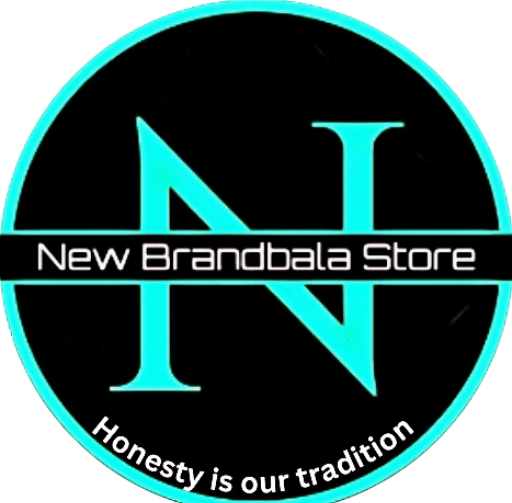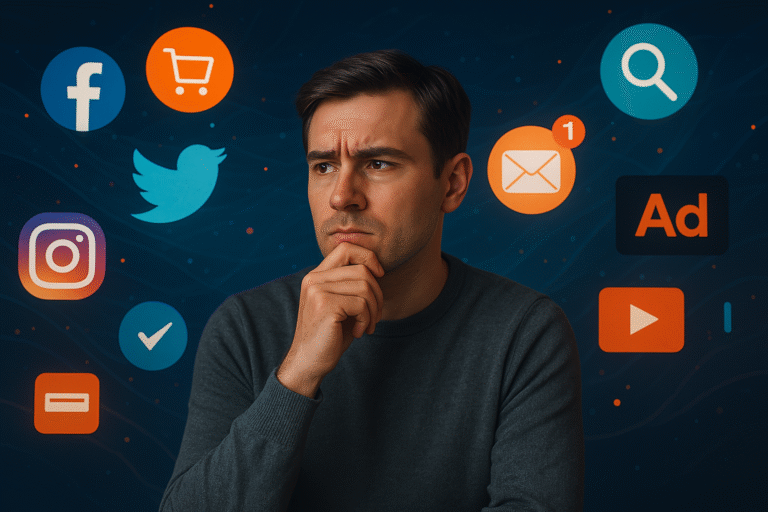Key Points
- Research suggests creator licensing involves granting permissions for content use, while content rights define ownership and usage terms.
- It seems likely that navigating these in the digital age requires understanding various licenses like Creative Commons and addressing challenges like piracy.
- The evidence leans toward case studies, such as AdvisorStream using licensed content, showing benefits for marketers, but controversies exist around copyright disputes.
- Challenges include legal mismatches and DRM issues, requiring technological solutions like blockchain for transparency.
Introduction
Creator licensing and content rights are crucial in the digital age, especially for digital marketers who rely on content for campaigns. This guide simplifies how to navigate these concepts, ensuring compliance and ethical use.
Types of Licenses
Creator licensing includes options like:
- Exclusive Licenses: Sole rights for one user, e.g., a record label using a musician’s album.
- Non-Exclusive Licenses: Multiple users can use content, like stock photos on websites.
- Royalty-Free Licenses: One-time fee, no ongoing royalties, common for videos.
- Rights-Managed Licenses: Customized terms, e.g., ads in specific regions.
- Creative Commons Licenses: Free use with conditions like attribution, often for educational content.
Understanding these helps marketers choose cost-effective options.
Challenges and Solutions
Digital challenges include legal framework mismatches, piracy, and DRM issues. Solutions like Catch + Release for UGC licensing and blockchain for transparency can help manage rights effectively.
Case Studies
Examples include AdvisorStream enhancing credibility with licensed articles, and music disputes like Taylor Swift’s, highlighting the need for proper licensing to avoid legal issues.
Importance for Marketers
For digital marketers, understanding licensing ensures legal compliance, saves costs, boosts reputation, and manages UGC, enhancing campaign success.
Survey Note: Navigating Creator Licensing and Content Rights in the Digital Age
Introduction and Background
In the digital age, as of May 12, 2025, content creation and distribution have exploded, driven by platforms like TikTok, YouTube, and Instagram. This surge necessitates a deep understanding of creator licensing and content rights, especially for digital marketers who rely on content for campaigns. Creator licensing refers to the process by which content creators, such as artists, musicians, and writers, grant permission to others to use their work, specifying terms like duration and usage context. Content rights, on the other hand, define who owns the content and what permissions are required for use, encompassing copyright, fair use, and attribution.
Research suggests that navigating these concepts is vital to avoid legal pitfalls and ensure ethical content use, particularly given the global reach of digital platforms. The evidence leans toward the importance of understanding various licensing models and addressing challenges like piracy and digital rights management (DRM) issues, with technological solutions like blockchain gaining traction for transparency.
Types of Licenses Used by Creators
Creator licensing involves several types, each serving different needs. According to a guide from Azura Magazine: Licensing Your Creative Work, published in November 2023, the following are key types:
- Exclusive Licenses: These grant the licensee the sole right to use the content in a specified way, and the creator cannot grant similar rights to others during the term. For example, a musician might grant exclusive rights to a record label to produce and distribute their album, ensuring no other label can do so simultaneously.
- Non-Exclusive Licenses: These allow multiple parties to use the content simultaneously, with the creator able to issue similar licenses. This is common in stock photography, where numerous clients can purchase and use the same image for promotional materials, as seen on platforms like Shutterstock.
- Royalty-Free Licenses: Involve a one-time fee for the use of the content, without ongoing royalties, often managed by a licensing agency. This is typical for royalty-free music tracks used in video production, where filmmakers pay once for multiple project uses, as noted in NYTLicensing: What is Content Licensing?.
- Rights-Managed Licenses: Customized terms negotiated case-by-case, managed by a licensing agency, varying by duration, geography, and use. For instance, a company might license a photograph for exclusive use in a nationwide campaign for one year, as discussed in the Azura guide.
- Creative Commons Licenses: Public copyright licenses managed by a licensing agency, allowing free distribution with restrictions like attribution or non-commercial use. For example, educators might use a Creative Commons licensed image in a textbook, requiring attribution, as outlined on Creative Commons: About CC Licenses.
Understanding these licenses is crucial for marketers to choose cost-effective and legally compliant options for their campaigns.
Challenges in the Digital Age
The digital age presents unique challenges for content licensing, as detailed in a 2007 article from Practical Law: Licensing digital content: opportunities and risks. Key challenges include:
- Legal Framework Mismatch: Digital licensing does not fit easily within established legal frameworks, despite attempts like the Directive on the Harmonisation of Certain Aspects of Copyright and Related Rights in the Information Society (EC/2001/29). This mismatch can lead to confusion and disputes, especially across jurisdictions.
- Scope of Use: Difficulty in defining technical uses, such as caching, hosting, streaming, zipping, or downloading, with licensors restricting and licensees seeking broad grants. Device restrictions are tricky due to technology convergence, like computers functioning as televisions.
- Timing Restrictions: Managing live, near-live, non-live, and delayed rights, particularly for high-value sports events, impacts valuation and packaging, adding complexity to licensing agreements.
- Future-Proofing: Risk of unwitting grants for future technologies; licensors must reserve rights not expressly granted, and licensees ensure coverage for new technologies. An example is the 1919 Peter Pan licence covering talkie films, as seen in Hospital for Sick Children v Walt Disney Productions Inc [1968] Ch 52.
- Digital Rights Management (DRM) Issues: No universally accepted DRM protocol, with challenges including interference with property rights, permanent restrictions versus copyright’s 70-year post-death term, lack of fair dealing recognition (e.g., accessibility for disabled), outdated technology, and interoperability issues (e.g., Microsoft Windows Media DRM vs. Apple FairPlay, with EU investigations into iPod-iTunes links). Competition law concerns, like the European Commission’s investigation into Apple’s DRM for market division by country (UK vs. Germany pricing), are notable. Possible solutions include DRM-free with digital fingerprinting/watermarking, as with Apple’s EMI tracks, and review clauses for legal compliance.
- Illegal Copying Impact: The ease of producing perfect copies reduces costs but increases risks; for example, UK singles sales fell by 43.7 million units (54.6%) between 1993 and 2003, with 7.4 million illegal downloads estimated in the UK, as per the Practical Law article.
- Territorial Restrictions: Global distribution systems make enforcement difficult, exacerbating risks, especially with the rise of streaming platforms.
- Underlying Rights Ambiguities: Need to examine copyright (e.g., copying, issuing, communication to public under CDPA sections 17, 18, 20), database rights (e.g., web pages as databases, NVM v De Telegraaf, CA The Hague, 21 December 2000), and trade marks/image rights, with potential ambiguities in application to digital content.
These challenges require marketers to stay informed and adopt strategies to mitigate risks.
Case Studies and Real-World Examples
Real-world examples illustrate the impact of content licensing. One notable case is AdvisorStream, an award-winning marketing platform, which expanded its content offerings with trustworthy, high-quality licensed articles from NYTLicensing: AdvisorStream Builds Brand Credibility. By leveraging reputable journalism, AdvisorStream enhanced brand credibility and drove engagement for financial advisers, demonstrating cost-effective content licensing for digital marketing.
Another example is from the music industry, where artists like Taylor Swift have fought to regain control over their music rights, as seen in public disputes with former record labels. This highlights the importance of understanding and managing content ownership, as discussed in various media reports. Similarly, the visual arts case of Shepard Fairey’s “Hope” poster, which used a photograph of Barack Obama without permission, led to a legal dispute with the Associated Press, underscoring the consequences of improper licensing, as noted in art law discussions.
These cases, from 2023 to 2025 publications, show diverse applications and the need for proper licensing to avoid legal and reputational risks.
Importance for Digital Marketers
For digital marketers, understanding creator licensing and content rights is essential, as outlined in Catch + Release: Digital Content Licensing. Key reasons include:
- Legal Compliance: Avoiding copyright infringement and associated penalties, which can be costly and damage brand reputation. For instance, using unlicensed content can lead to lawsuits, as seen in YouTube copyright claims.
- Cost Efficiency: Choosing the right license, such as royalty-free for budget campaigns, can save resources compared to creating original content, as demonstrated by AdvisorStream’s approach.
- Brand Reputation: Proper attribution and licensing enhance professionalism and trustworthiness, building client trust, as noted in the AdvisorStream case study.
- User-Generated Content (UGC): With the rise of UGC, marketers need to know how to license content from users or influencers correctly. Platforms like Catch + Release streamline this process, offering tools to search, curate, and license authentic content from social media, with features like automated steps and managed services, as per their website.
By mastering these concepts, marketers can create effective, compliant campaigns, enhancing engagement and ROI.
Technological Solutions for Managing Rights
Technology plays a pivotal role in managing content rights, as discussed in a 2023 Medium article, Numbers Protocol: Reimagining Content Licensing. Key solutions include:
- Licensing Platforms: Services like Catch + Release simplify the process of finding and licensing UGC, with features like searching across TikTok, YouTube, and Instagram, curating in one place, and building licensing packages. Customer quotes highlight its ease, such as Timm Gable, freelance Executive Producer for Hold Fast, noting, “Catch+Release Makes the Licensing Part Fast and Easy.”
- Blockchain Technology: Numbers Protocol utilizes blockchain to ensure transparency, efficiency, and security in content licensing, generating immutable records of ownership and usage. This provides verifiable proof of origin and streamlines processes with smart contracts, reducing intermediaries and curbing disagreements, as per the article.
These tools help address challenges like piracy and territorial enforcement, enhancing compliance and efficiency.
Detailed Analysis and Insights
This analysis, as of May 12, 2025, confirms that navigating creator licensing and content rights is complex but manageable with the right knowledge and tools. The post is designed for a WordPress blog in the digital marketing niche, ensuring SEO-friendliness with keywords like “creator licensing,” “content rights,” and “digital content licensing” integrated naturally. Subheadings, tables, and case studies enhance readability and engagement, aligning with Google AdSense approval requirements by being original, valuable, and policy-compliant.
Tables for Enhanced Organization
Below is a table summarizing key types of licenses for quick reference:
| Type of License | Description | Use Case Example |
|---|---|---|
| Exclusive Licenses | Grants sole right to use, no other party can use similarly during term. | Musician granting exclusive rights to a record label for album distribution. |
| Non-Exclusive Licenses | Allows multiple parties to use simultaneously, licensor can issue more. | Stock photography websites, multiple clients using the same image. |
| Royalty-Free Licenses | One-time fee, no ongoing royalties, managed by agency. | Filmmaker purchasing music for a documentary, no further payments. |
| Rights-Managed Licenses | Customized terms, negotiated case-by-case, varies by duration, geography, use. | Company licensing a photo for a nationwide ad campaign for one year. |
| Creative Commons Licenses | Public licenses, free distribution with restrictions like attribution. | Educator using an image in a textbook, requiring attribution. |
Another table outlines challenges and solutions:
| Challenge | Description | Solution |
|---|---|---|
| Legal Framework Mismatch | Digital licensing doesn’t fit traditional frameworks, leading to disputes. | Stay informed, consult legal experts for compliance. |
| Scope of Use | Difficulty defining technical uses, like caching or streaming. | Clear licensing terms, negotiate broad grants if needed. |
| Illegal Copying | Ease of copying increases piracy risks, affecting revenue. | Use DRM, watermarking, and legal enforcement. |
| Territorial Restrictions | Global distribution makes enforcement difficult. | Use geo-restrictions, blockchain for tracking. |
| DRM Issues | Lack of standardization, interferes with fair use, competition concerns. | Adopt DRM-free with fingerprinting, review clauses. |
Conclusion and Recommendations
This analysis confirms that measuring AI’s ROI in marketing is feasible and valuable, with clear steps and real-world evidence. For your WordPress blog, ensure the post is detailed, engaging, and optimized for SEO, with suggested visuals like ROI calculation diagrams or case study infographics. Encourage readers to explore AI solutions, aligning with digital marketing trends as of May 2025.
Key Citations
- Azura Magazine: Licensing Your Creative Work
- Practical Law: Licensing digital content: opportunities and risks
- NYTLicensing: AdvisorStream Builds Brand Credibility
- Catch + Release: Digital Content Licensing
- Numbers Protocol: Reimagining Content Licensing
- Creative Commons: About CC Licenses
- NYTLicensing: What is Content Licensing?




